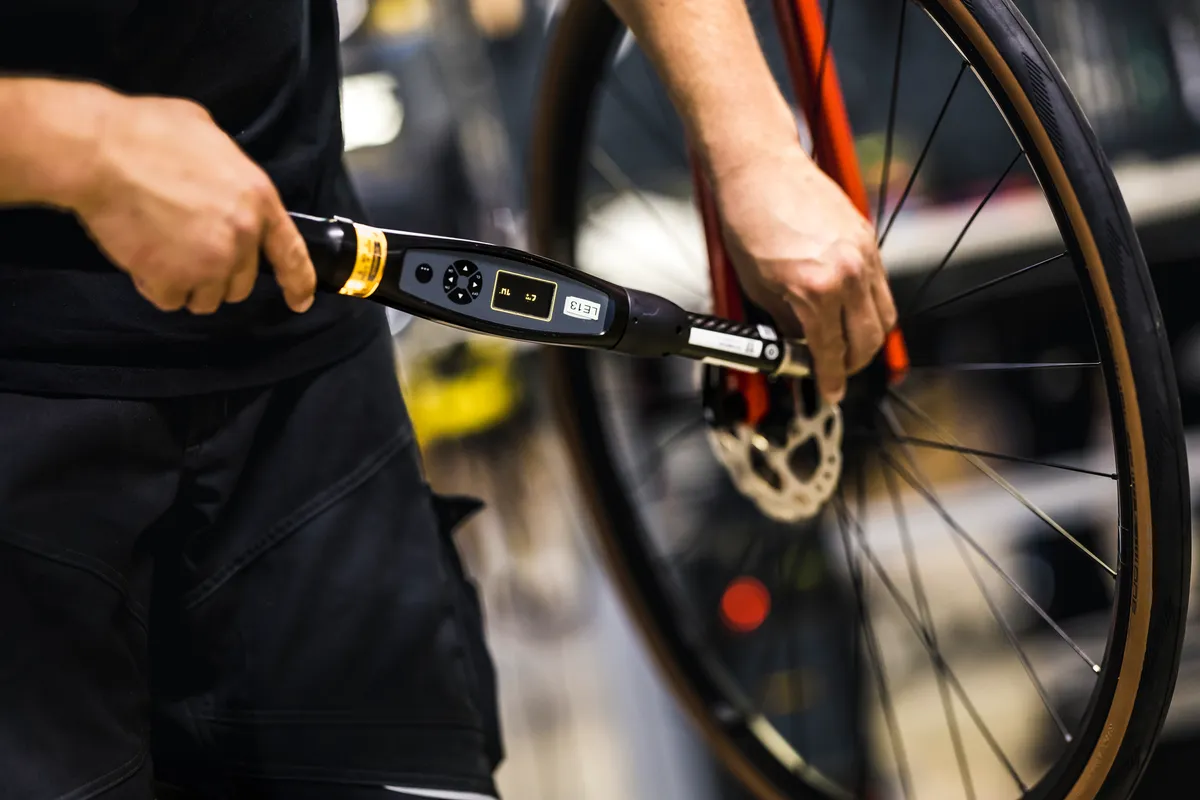When I attended the launch of the Canyon Lux World Cup in Koblenz, Germany last month, I was given a tour of Canyon’s production factory.
I witnessed a fascinating industrial-scale process, and the brand leads an impressively tightly managed operation.
Once all of the parts are available for a specific bike, the frame and components head down an assembly line, with each station carrying out a different part of the build process.
At the end of the build, each bike heads to a mechanic's station to carry out a PDI (pre-delivery inspection) check before it's boxed and shipped out to the customer.
My inner tool nerd was quickly drawn out when I was guided towards one mechanic's work station and caught a glimpse of the torque wrench the technicians were using.
BikeRadar technical editor Tom Marvin has already covered the wrench on our YouTube channel, but it’s worth revisiting.
The Canyon mechanics use a digital WiFi torque wrench that automatically adjusts itself to torque each and every bolt on a new bike. The torque wrench features LED lighting that illuminates on a scale as you reach the required torque.
It then registers the data to a central server, where the information is stored.
Canyon has the ability to scan the QR code label on the underside of a bike and it can then discover exactly what torque each bolt was tightened to during the PDI.
The mechanic's work station

I also got to take a closer look at a mechanic’s work station. The tools on display included Wera screwdrivers and hex drivers, and Knipex pliers – both very reliable and precise options.
The mechanics opt for T-handle hex wrenches rather than P- or L-handles, presumably for their long reach to the bolt and ergonomic grip.
Of course, no work station is complete without some form of hammer in case an aspect of the build requires some persuasion.
The fact there are various rear-derailleur B-gap adjustment tools is interesting and now a common sight in many workshops.
Modern 12-speed rear derailleurs are very sensitive to correct B-gap adjustment (the distance between the guide pulley and the cassette teeth). The gauge helps you set this correctly.
There are a plethora of derailleur types and cassette combinations out there with different compatibilities, hence the variety of B-gap gauges.

Interestingly, there isn’t a derailleur hanger alignment gauge on the bench, but perhaps there is a communal tool, given they are quite expensive and used less frequently.
While Canyon's torque wrench sadly isn’t available for purchase, it’s a reassuring sight to see on a production line and I hope more manufacturers either develop or get on board with smart workshop technology.


